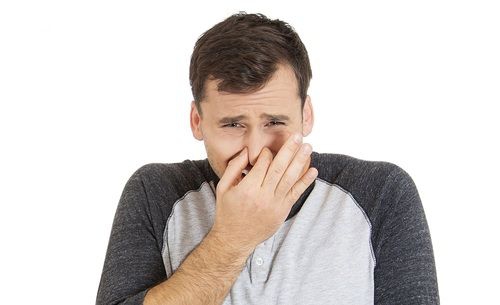With its unattractive physique and less than enticing scent, who would want to give their poop a second glance? Most people are the "flush-it-and-forget-it" type, but you need to understand that your feces are one of the most consistent indicators of health. Next time, take a closer look at your "work of art" and try to know your poop better to be able to decode the message your body is trying to give.

Know Your Poop: Color
Brown or Yellow-Brown Poop
What It May Mean: If it's brown or yellow-brown poop, it's perfectly fine. Your stool is usually brown because of the bile produced in the liver. You are healthy enough.
Yellow Poop
What It May Mean: Greasy yellow poop that smells bad usually indicates excess fat. It may be the outcome of celiac disease or another malabsorption disorder.
Possible Dietary Causes: Yellow poop may be caused by the gluten intake, such as eating cereals and breads.
Green Poop
What It May Mean: It may suggest that food is moving through the large intestine quickly, such as in case of diarrhea.
Possible Dietary Causes: You may have been eating green leafy veggies or green food coloring, such as flavored ice pops or drink mixes. Iron supplements may also change stool color to green.
Black Poop
What It May Mean: It may suggest that you have bleeding in the upper gastrointestinal tract, which could be due to ulcer or cancer.
Possible Dietary Causes: Your stool color may turn black if you're taking vitamins or iron supplements, or you have eaten black licorice.
Clay-Colored Poop
What It May Mean: Stools that are clay, pale, or putty-colored may represent a problem in the biliary system, the drainage system of the gallbladder, pancreas, and liver.
Possible Dietary Causes: Certain medications such as anti-diarrheal drugs or large doses of bismuth subsalicylate may change the color of your poop.
Red Poop
What It May Mean: Red stools are often a sign that something is not right in the digestive tract. Blood in your stool can come from anywhere along your digestive tract, and may well be a symptom of cancer.
Possible Dietary Causes: You may see bright red poop after eating cranberries, beets, tomato soup, or red gelatin.
Know Your Poop: Shape
Separate Hard Lumps
It usually means that you're not taking enough fiber and fluids. Drink plenty of water and chomp on some vegetables and fruits.
Sausage Shape
That's the best form of poop, especially when it's smooth and soft. No need to do anything – you're doing just fine! If the poop is of sausage shape but you can find small lumps in it, you should consider taking more fluids and fiber.
Soft Blobs
If you're pooping soft blobs with clear edges several times a day, there is no need to worry. It's quite normal. You may consider eating dietary fiber to get to the optimal poop shape.
All Liquid
It's diarrhea! When your poop is watery with no solid pieces, it usually means you have an infection and your body is trying to clean it out. Drink plenty of water and see a doctor to tackle the infection.
Mushy Stool
It's usually on the edge of normal, especially if you notice fluffy pieces with ragged edges. Take an action or it will turn to diarrhea.
Soft and Sticky
It means your stool contains too much oil, which suggests that something is preventing your body from absorbing the fats properly. This could be due to a disease like chronic pancreatitis.
Pencil Shape
A pencil shape poop usually says you're constipated. In rare cases, it can also be an indication of rectal cancer. There's nothing to worry if you notice pencil-thin stool for a couple of days. You can usually resolve the issue by adding more fiber to your diet. If it doesn't turn normal after a week or so, it is important to see your doctor to rule out the possibility of rectal cancer.
Floating Poop
You will notice floating poop if you have excess gas in your digestive tract. This usually happens when your diet includes lots of sprouts, beans, cabbage or large meals. If floaters become a regular sighting with oil-slick appearance, you may have to contact your doctor to figure if there's something keeping your body from absorbing fats from food. This may happen due to food allergy or inflammation in your pancreas. A stool sample test will help find the underlying problem.
Know Your Poop: Frequency
The research findings say that a person should poop every day, and anything between 1 and 3 is perfectly normal. You need to understand that poop consists of toxins and other waste materials, so it is important to remove those waste products daily. You may want to consult your doctor if you're pooping infrequently in a week or have a bowel movement more than 5 times a day.
For more details, you can watch the following video to know your poop:
When to See a Doctor
It is important to make an effort to know your poop and get in touch with your doctor if you're a bit concerned about your stool color. Immediate medical attention is required in case you notice blood in your stool or your stool color is black or tarry.
However, it is a good idea to wait a bit and not react the moment you see something out of the ordinary in your stool. If it happens again and symptoms don't go away, it's time to see your doctor. So, know "what does your poop mean" and consult a specialist to ensure there's nothing serious.
- 1.

View All Comments /Add Comment